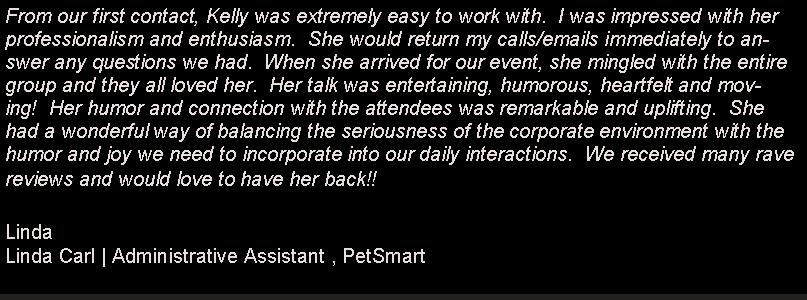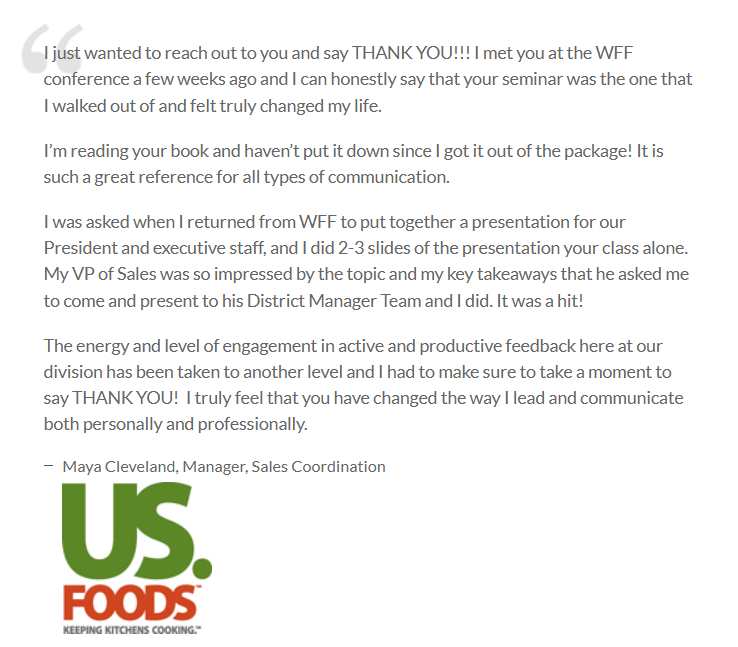Table of contents
Whether you're giving keynotes, corporate sessions, or workshops, strong testimonials build credibility, provide social proof, and help you land more bookings. But let’s be honest. Asking for them can feel awkward.
Speakers often report uncertainty about when and how to request testimonials without seeming pushy. In this guide, we’ll break down how a professional speaker asks for testimonials in a way that feels authentic and effective.
You'll learn when to ask, who to approach, how to frame your request, and where to showcase the testimonials once you have them.
The Best Time to Ask for Testimonials
Timing is everything. The best time to ask for a testimonial is right after your session, when the energy is still high and your message is fresh in people’s minds.
- Immediately after the talk: This is when your impact is at its peak. Don’t hesitate to approach attendees or organizers while the buzz is still alive. Something simple like, “Would you be open to sharing a quick thought about the session?” works well.
- Within 24/48 hours: Can’t do it in person? Send a follow-up email or message within a day or two. Make it personal. Mention the event, reference a moment you shared, and invite their thoughts.
- Through event organizers: If the event collected feedback forms, ask the organizer to share any positive comments or allow you to follow up with attendees directly.
Engaged audiences want to help their speakers. By asking while interest is high and experiences are vivid, you make it easy for them to recall specifics and provide enthusiastic testimonials.

Public Speaking Testimonials: Who to Ask?
Think beyond just attendees. The best testimonials come from a mix of people who saw your work from different angles:
- Event organizers: Their feedback highlights your professionalism and reliability. These testimonials are great for speaking proposals.
- Audience members: Audience testimonials showcase your impact, especially how your talk helped or inspired them.
- Fellow speakers or panellists: If you shared the stage, their perspective adds credibility within the speaker community.
- High-profile clients: If you’ve worked with known organizations or brands, a short endorsement from them goes a long way.
Remember: Variety adds strength. Collecting quotes from different angles (organizer, client, attendee) provides a fuller picture of your value.
Testimonials can give insight into the speaker's capabilities, credentials, and experience, and enhance credibility.
When asking each group, tailor your message: organizers might get a professional email, while attendees could respond to a quick post-event survey or social media prompt. Or simply, urge them to post an online review.
How to Ask for Testimonials as a Speaker
Asking effectively means making it personal, clear, and convenient. Speakers get the best results when they guide respondents with specific prompts. Experts advise against a generic “Can I have a testimonial?” and instead use targeted questions. For example:
- Be Personal and Specific: Reference the event and the individual’s experience. E.g., “It was great meeting you at [Event]. What did you enjoy most about my talk on [Topic]? Your thoughts would help me improve.” This reminds them of the context and shows you value their unique perspective.
- Provide a Response Structure: Tell them what you’re looking for. A proven formula is Problem → Impact → Result. Ask them to describe a challenge they faced, how your talk addressed it, and the outcome. This ensures testimonials are detailed and not just vague praise.
- Offer Multiple Formats: Different people prefer different media. Let them choose: a quick email quote, a LinkedIn recommendation, or even a short video recorded on their phone. Video testimonials are especially persuasive. Consumers trust real people over polished branding, and seeing a happy attendee speak directly adds authenticity. Encourage something like, “Feel free to shoot a quick video testimonial if you’re open to it. It could be as simple as using your phone to say what you liked about the session.”
When you send your request (by email or social media), include a brief example or draft if they’re busy. Many people appreciate a starting point, so let's say, “To make this easier, I’ve jotted a few bullet points from our conversation. Feel free to adjust or ignore them.”
This friendly approach results in meaningful, articulate testimonials rather than empty compliments.
If you still feel unsure about how to creatively use your testimonials, check out these 10 creative ways to use testimonials for marketing.

Speaking Business Testimonials: Best Ways to Request
There are several effective channels to request testimonials to grow your business, each with its pros:
- Email Request: Send a concise, polite follow-up email to organizers or contacts. A template might be:
Subject: Thank You + Quick Question (Testimonials)
Hi [Name], I appreciated the chance to speak at [Event]. I hope the attendees found it valuable. If you have 2 minutes, could you share a brief testimonial about the session’s impact? Just a few sentences would help me a lot. Thank you for your time!
Best, [Your Name].”
This approach is direct and trackable, especially for formal clients. - Social Media: Platforms like LinkedIn and Twitter make it easy to reach colleagues and organizers. After the event, post a short thank-you note on LinkedIn and tag the organizer: “Thanks to [Event/Organization] for a great experience! If anyone wants to share feedback on my talk, feel free to drop a comment or DM me!” You can also privately message key attendees with a friendly request to comment on your post or write a recommendation.
- Survey or Form for Collecting Event Feedback: For larger events, use a Google Form or Typeform to collect testimonials systematically. Share the form link in a post-event newsletter or a slide in your last presentation. Keep the form very short (name, role, testimonial) to respect busy readers. Including a progress bar or writing prompts encourages completion. This method is scalable and organizes responses in one place.
- Video Testimonials: Encourage quick videos on the spot. If an attendee offers help, say: “Would you mind recording a 30-second video for me?” Have them state their name, the event, and one highlight. Even a smartphone clip works. You can later edit and upload these to your website or social media. Video is impactful: seeing a real person’s face and hearing their voice makes testimonials more convincing and memorable.
By mixing methods, you maximize response. An email might catch those not on social media, while a post-event survey can reach many attendees at once.
If you want to simplify the entire testimonial process, instead of juggling email threads and lost quotes, try Testimonial Donut. This is the easiest way for speakers to collect, manage, and showcase audience testimonials in one place.
Whether it’s written, video, or Google reviews, Testimonial Donut makes testimonial collection seamless.
Overcoming Common Challenges
Even with the best approach, speakers often hit snags. Here’s how to tackle them:
- Unresponsive Contacts: If someone promised a testimonial but went quiet, a gentle follow-up is fine. Wait a week, then send a brief reminder: “Just checking in, I’d still love to get your feedback on the session at [Event]. No rush if you’re busy, but even a sentence would be very helpful!” Polite persistence (one follow-up) is usually acceptable.
- Generic or Vague Testimonials: Sometimes, you’ll get one-word praise (“Great talk!”). To encourage depth, reframe the request. Ask a specific question like, “Could you share one specific insight or moment that stood out?” Or send them examples of stronger testimonials (anonymized). You can even offer to co-write: “I started a draft testimonial from your kind words – feel free to adjust it.”
- Privacy and Permissions: Some people hesitate to have their words made public. Always clarify usage. For instance, “I plan to feature testimonials on my website and marketing. Let me know if you’d prefer I only use your initials or keep your name private.” Obtain consent before posting. Emphasize you’ll share the final quote with them for approval, which most people appreciate.
Facing these challenges calmly and respectfully keeps relationships positive. The effort you put into handling them can itself demonstrate your professionalism.
How to Showcase Speaker Testimonials Effectively
Gathering testimonials is only half the battle, using them well multiplies their impact. Here’s how to display them:
- Website: Create a dedicated testimonials page or section on your site. Feature select quotes on your homepage or about page. Pair each quote with the speaker’s name, title, and photo if possible.
For example: “[Name], [Position/Company] – ‘[Testimonial quote]’”. An image or logo of the event where you spoke adds context. - Speaker Reel: Incorporate video testimonials into your promotional video reel. A 5–10 second clip of an audience member praising your talk can replace or enhance text slides. Seeing a smiling attendee say your name or topic is powerful social proof.
- Social Media and LinkedIn: Post testimonials on LinkedIn as regular updates, tagging the author if appropriate. This not only boosts your credibility but also gives the testimonial more visibility. You can also feature LinkedIn recommendations you receive: screenshot them (with permission) or simply encourage contacts to write on your LinkedIn profile.
- Proposals and One-Sheets: When pitching for speaking gigs, include testimonials in proposals or one-pagers. A concise speaker one-sheet often has a “What They Say” section with two or three short quotes. Event organizers appreciate seeing real feedback inline when they evaluate proposals.
- Newsletter or Blog: Feature a “Testimonial Spotlight” in your email newsletters or blog posts. Rotate highlights so your audience sees fresh testimonials regularly.
By strategically placing testimonials where potential clients look for reassurance, your website, social profiles, and pitch materials, you turn words of praise into concrete bookings and trust.
Learn more about how to turn testimonials into compelling success stories here.
Final Thoughts: Start Asking, Start Growing
To summarise the answer to your question: how should a professional speaker ask for testimonials? The answer is: thoughtfully, timely, and with confidence.
Testimonials are one of the most effective ways to grow your speaking business and build trust, so don’t leave them to chance.
The right testimonials can transform how you’re seen by future clients. Start collecting yours today and watch the doors open.
Want to make testimonials easier than ever? Try Testimonial Donut, a simple way to collect and showcase online reviews for a speaking business.
Testimonial Donut can help you automate collection and maximize the impact of every testimonial. With consistent effort, you’ll soon see more enthusiastic quotes circulating and more speaking gigs booked on the strength of others’ praise.
.png)


